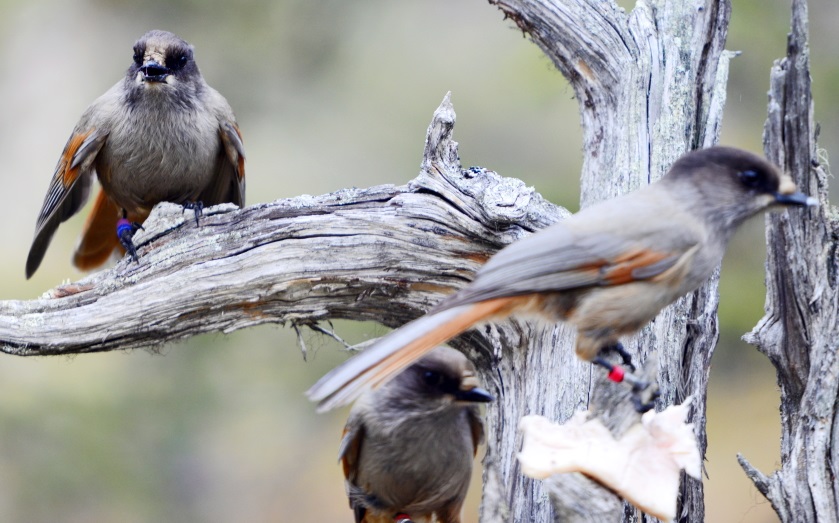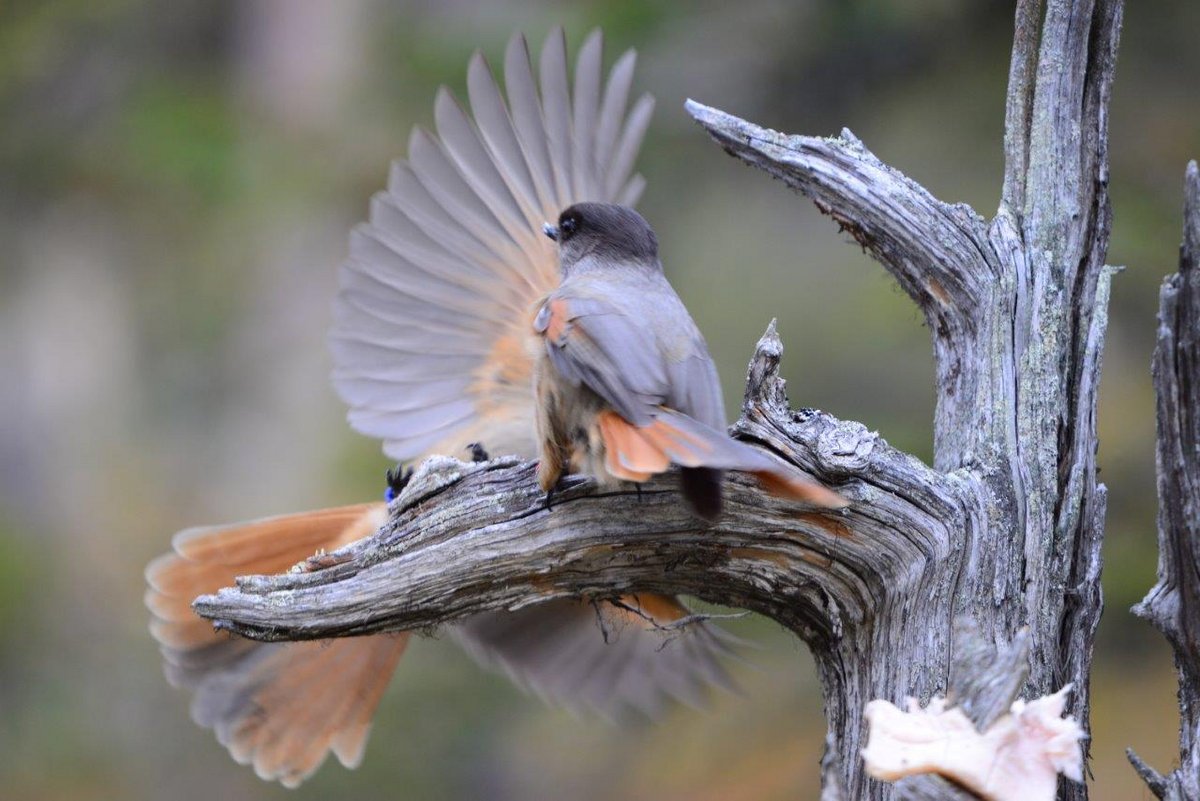
Copyright: Michael Griesser
What makes groups successful?
The interaction between individual and group-level social phenotype
Individual fitness is the currency of Darwinian evolution, and largely depends on an individual’s social phenotype (ISP henceforth). Work in diverse taxonomic lineages shows that ISP depends on early life experiences and is linked to the gut microbiome. However, in animals living in social groups, an individual’s fitness is also affected by the group’s social phenotype (i.e., a combination of group members’ ISP; GSP henceforth). Although the latter component is rarely considered, it is potentially quite important: successful groups should be better at coordinating their behaviours, e.g., during foraging or predator encounters.
Our project investigates these links in a wild population of Siberian jays (Perisoreus infaustus) in Swedish Lapland, monitored since 1989. This bird species lives in stable, enduring groups of 2–6 individuals, and we follow individuals in N=90 groups throughout their life to collect life-history data and standardized behavioural data via video recordings.
Our project assesses
i) the link between the microbiome, early life stress, social environment, and ISP;
ii) the ISP-GSP interplay and coordination efficiency of groups;
iii) the fitness consequences of the ISP-GSP interplay.

Copyright: Michael Griesser
